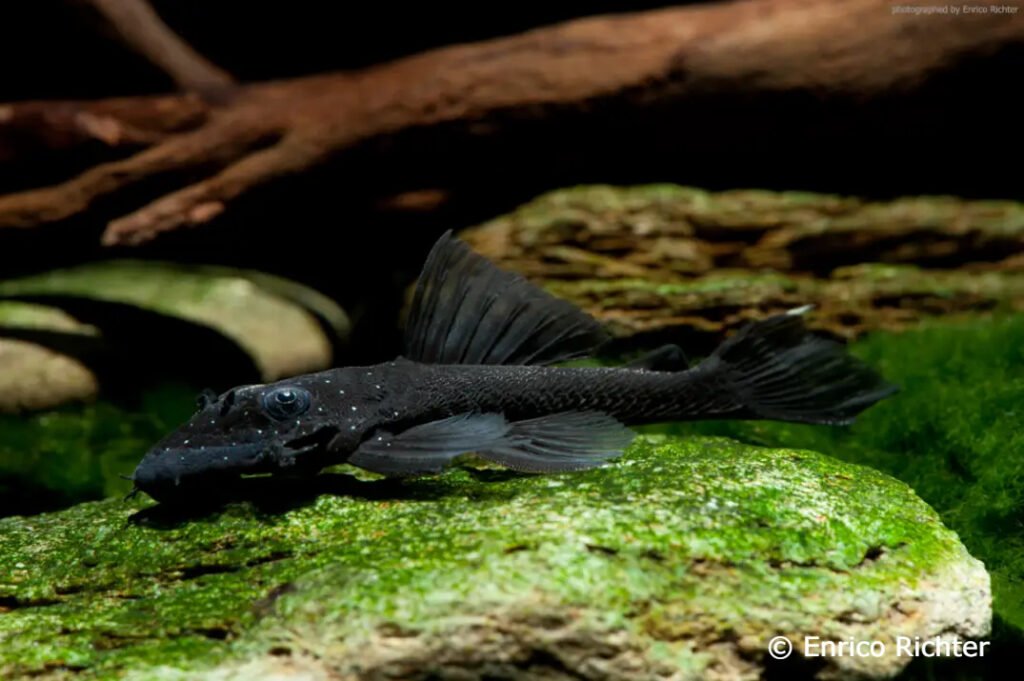
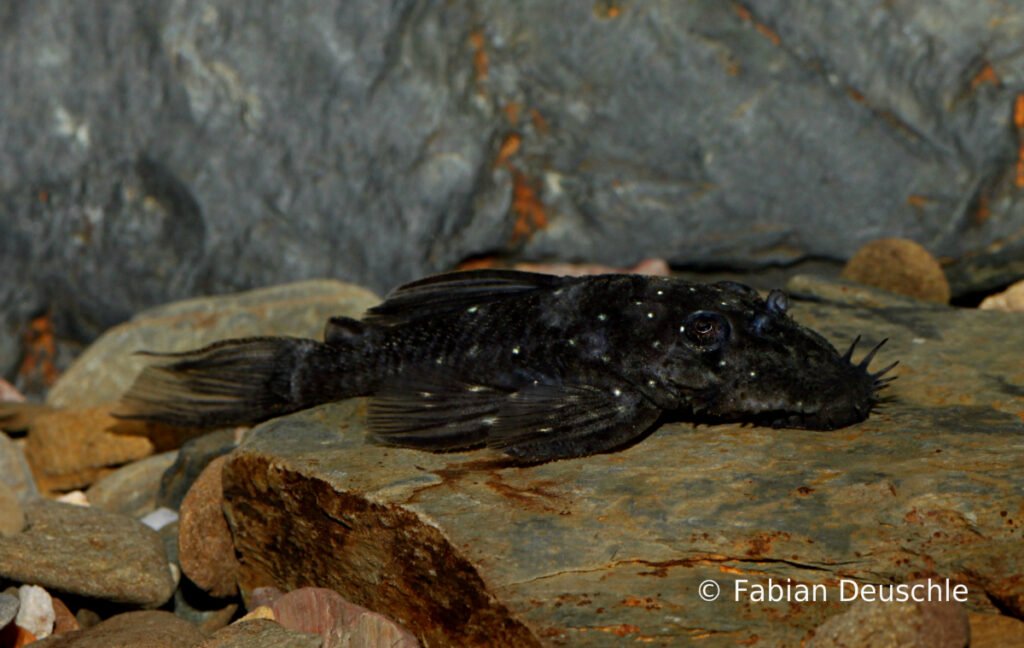

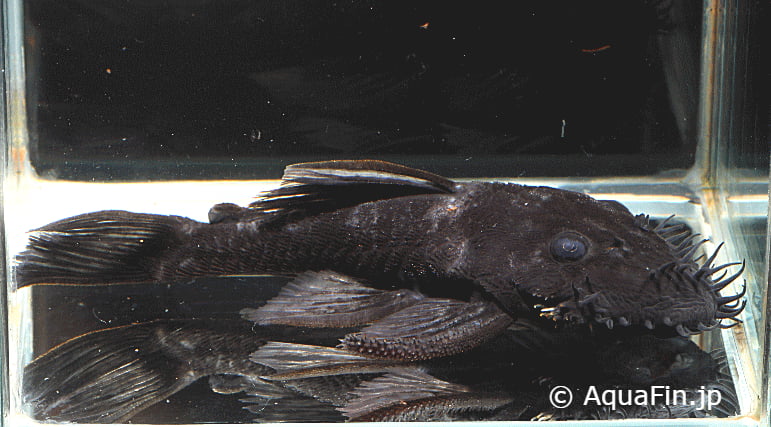
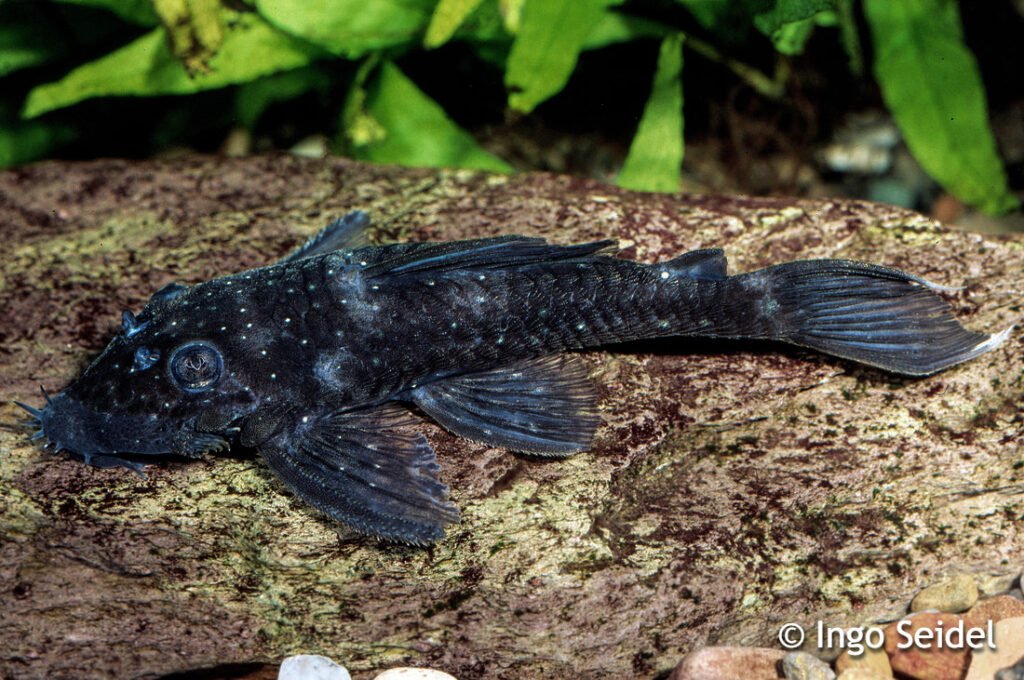

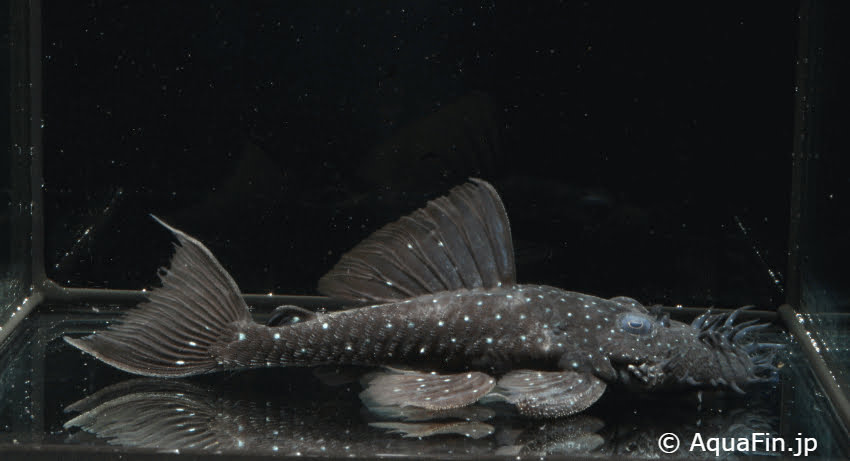
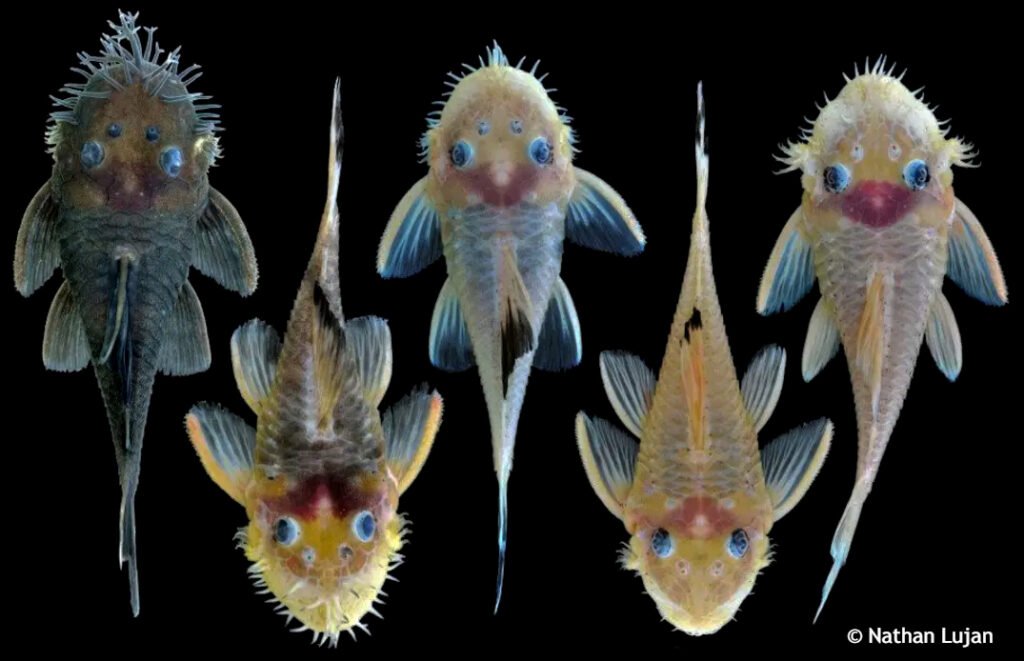
Ancistrus macrophthalmus can be recognized and identified by its flat, broad bodyshape (slightly reminiscent of A.ranunculus, L34, from Rio Xingu, Brazil) and big eyes (hence the scientific name). It’s not a very common encounter in our hobby, but it’s exported from Colombia every now and then. It’s usually never traded under its correct name, and is often wrongfully labelled A.ranunculus and A.triradiatus by exporters there. As an aquarium resident, it’s slightly more demanding to keep than many other Ancistrus species. The lack of striking pattern makes it a species mostly sought-after only by dedicated enthusists and collectors.
Facts:
Name: Ancistrus macrophthalmus (Pellegrin, 1912)
Trade names: LDA74, Big-Eyed Ancistrus
Origin: Orinoco (Rio Atabapo, Puerto Carreño), Colombia and Venezuela. Possibly also upper Rio Negro, Brazil.
Maximum TL: 12 cm / 5”
Interestingly enough, A.macrophthalmus can occur as covered in small white spots and devoid of spots, plus anything in between. This is also known in A.ranunculus, which is represented in Rio Xingu, Brazil, by non-spotted (L34) and full spotted (L255) morphs. It’s still unclear if both spotted and non-spotted varieties of A.macrophthalmus occur together in the same habitat in the Orinoco system though. In addition, even pale / yellow specimens are found in wild populations of this species.
A.macrophthalmus has been bred in captivity, but there are very few reports. It can be kept and bred under the same conditions as most other L-numbers, in clean, well-filtered water with a temperature of 25-30 C. A.macrophthalmus will do best on a varied diet, as it’s an omnivore.
More info:
